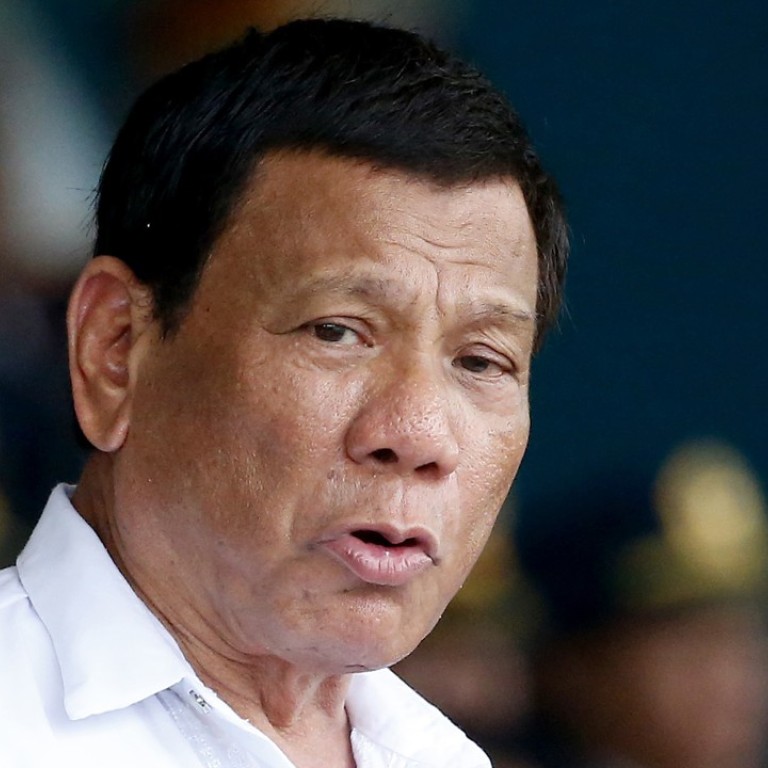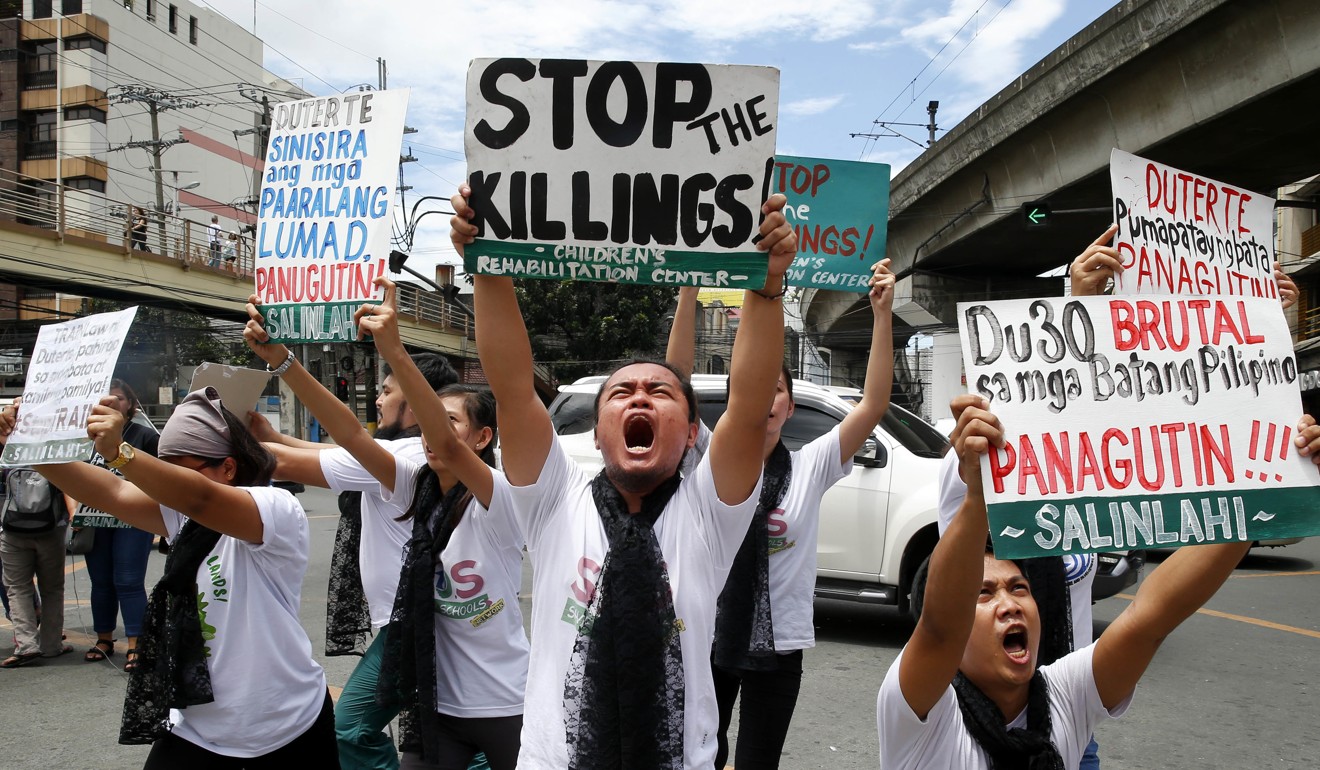
Philippines’ hunt for Red October communist plot: a Duterte hoax?
The administration has a reputation for silencing its critics in outlandish ways – opponents believe a confected coup is its latest such scheme
The “Red October” plot, which came to light late last month, will allegedly be executed by various opposition forces. If true, the claims suggest that in his short tenure as commander-in-chief, Duterte has managed to do what seemed impossible in the modern political climate of the country – to unite almost all of the largest social movements in the country against him.
Presidential spokesperson Harry Roque has backed the military’s claims and pointed the finger at the left-leaning Liberal Party and the far-right coalition aligned with Senator Antonio Trillanes. Furthermore, he singled out the Communist Party of the Philippines (CPP) as one of the plot’s primary architects.
Philippines’ inflation crisis: will Duterte feel the pinch?
But could the claims be a smokescreen for something else? After all, the current administration has a record of silencing its critics in the most outlandish ways. Two political opponents in the Senate have been indicted on criminal charges: Trillanes (later deferred by court) and Leila De Lima, a figurehead of the Liberal Party. Left-leaning lawmakers have also been hit by arrest orders for a decade-old double murder case, which have since been quashed.
Maria Lourdes Sereno, up until three months ago the Chief Justice of the Supreme Court, also had inclinations towards the opposition. Her appointment was voided by an unprecedented ruling by her fellow justices, who were allied with Duterte.
Suspicions that the plot was indeed a smokescreen gained traction when a senate hearing this week cleared the Liberal Party and the Trillanes camp of involvement. And when the military was asked about their knowledge of the various groups’ participation, they responded by saying new evidence suggested the CPP had only intended on collaborating but had not done anything concrete, as of late.
Whatever the truth of the matter, the development has allies of the regime cultivating a hysteria that could justify more repression of those who call out the faults accumulated in the last two years of the Duterte administration.
Is this simply a ploy for another round of crackdowns by the authorities?

SIMPLY A PLOY?
According to a statement by the Philippine Peace Centre, a non-governmental organisation closely monitoring relations between the government and the CPP, Red October is “part of the scheme to red-tag, demonise and stigmatise the more militant and progressive groups as ‘terrorists’ and ‘communists’ as a prelude to and pretext for ‘neutralising’ them”. Even the alleged plot’s name invokes images of the Russian Revolution that toppled the tsar in October 1917.
Over different regimes, it has become common for the military to brand legitimate grass roots activist organisations as communists in an effort to justify more extreme forms of suppression. Last March, a “terror list” of people allegedly working with the CPP was released, naming more than 600 individuals, most of whom belong to legal democratic organisations. It included some surprising mentions – such as Victoria Tauli-Corpuz, a lifetime human rights defender and now United Nations special rapporteur on indigenous peoples.
The winners and losers in Duterte’s China play
Associations with the CPP can automatically make someone a target. In the past two years alone, human rights group Karapatan tallied 141 extrajudicial killings of activists and community organisers along with 297 cases of illegal arrest and detention. This is in line with the prevailing counter-insurgency programme that has deemed the victims enemies of state for their supposed links to the CPP.
Arguably the broadest of the coalitions mentioned by the Duterte camp was the Movement Against Tyranny (MAT), which was convened by progressive groups, many of whom have constituents that have already become casualties of the counter-insurgency strategy. In a statement, MAT condemned the “conspiracy” and “fantastical” claims fuelled by present armed forces chief Carlito Galvez, saying that this “disinformation is in the service of a grand Duterte plan to bring the country totally under dictatorship”.
It’s not an entirely unlikely scenario, as Duterte has frequently toyed with the idea of declaring martial rule over the entire country – a power he has held since last year over the Mindanao region, roughly one third of the archipelago, in what was meant to ease extremism in the area but has resulted in even more violations of civil and political rights including indiscriminate bombings affecting more than 300,000 people.

Former armed forces chief Emmanuel Bautista has had a special place in Duterte’s cabinet since the beginning of his administration. He is now the undersecretary for the justice and peace cluster, a position created specifically for him. The military man received acclaim from his superiors during former President Benigno Aquino’s tenure for authoring the “Oplan Bayanihan” counter-insurgency plan, which stresses winning the hearts and minds of the people rather than merely defeating an enemy through superior armed might.
The armed forces’ Galvez said this entailed involving civilian agencies in quelling the insurgency, for instance boosting the activity of offices that dole out social services and information to the public to derail any negative sentiment towards the state. Besides vilifying progressives in the public eye, he added that stopping any potential rebellion would require nipping it in the bud, in schools, factories and other concentrations of dissent that lead people to take up revolutionary struggles.
The armed forces has already gone so far as to label the current student and labour movement as sub-projects of Red October.
How to catch a mutineer: the Philippine senator spooking Duterte
So where did all this intelligence on the supposed coup come from? Apparently from recently seized laptops.
Several announcements on Red October’s tactics have made the airwaves, yet little evidence has been provided to back these claims.
At a press conference, the armed forces revealed what it claimed to be a page from a key document outlining the plot – featuring big, bold capital letters at the top and bottom bearing the word “secret”.
The internet poked fun at the media gimmick, asking why stealthy underground movements would label their most important documents with the most conspicuous word imaginable.
The Bayan organisation, one of the lead conveners of MAT, slammed the fuss the military was making as an “attempt to vilify those who criticise and oppose Duterte’s increasingly tyrannical rule, sow intrigues to undermine broad unity against his regime and concoct a fake ‘Red October’ plot to justify creeping martial law”.
The plot may be manufactured, but it is one with serious and dangerous ramifications for the growing political tumult as well as for the population in general. There may be no grand collusion by political forces to remove Duterte from office this October. But there are movements, communist or otherwise, genuinely gaining ground not merely for a particular agenda but to halt an administration despised by its opponents as the biggest threat to democratic rights and civil liberties.

